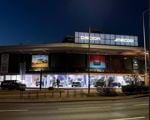The carmaker has 320 customer facing points, up from 280 in 2000, of which 158 are main dealers (around 95 owners). Six are authorised repairers and the balance are van specialists, satellite sites. There is also a secondary network of retail-only dealers and service centres which are contracted to a main dealer. It expects to have 355 customer points by the end of the year, rising to 450-460 by 2008.
More flexibility for dealers
“Our strategy is to substantially increase our servicing outlets, authorised repairers and secondary service points,” says Renault UK director, franchising Andy Cockeram. “We have moved away from having outlets which all do new, used, service and parts because we recognise there is no blueprint that will suit everyone.
“We let dealers, in discussion with us, come up with their own representation plan. This gives them more flexibility and pulls out cost.”
The new approach is an evolution of the hub strategy which started in the late 1990s. That became the common hub programme in 2000 in conjunction with sister company Nissan, focusing on a single dealer partner in each market area handling both marques.
“But the Renault network was already established at the time of the plan, so we had the philosophy of gaining representation in the smaller markets,” adds Cockeram. The hub programme has also softened, with Nissan now responsible for setting its own franchise representation policies.
Renault’s 10-year car parc is about 1.9m cars and rising, but service penetration by the network is significantly behind the European average. Boosting the number of sites should help to improve retention rates.
Cockeram says Renault received around 150 enquiries from independent repairers following the revisions to block exemption last October, although most were speculative. Enquiries received now tend to be from serious candidates. He has 20-25 live applications for authorised repairer status and predicts a network of 25 within three years.
That means most of the network growth will come from dealers opening their own satellite repair sites or sub-contracting to other businesses.
Profitability bears up
In addition, Renault is expanding the van service network. Currently standing at 28 outlets, of which almost half are standalone sites, it is targeting 55-60 van service centres over the next three years. Between 20-25 projects are under way.
Cockeram admits that while the network’s profitability bears up against volume rivals, it is not high enough on average.
Last year, margins were about 0.9% across the network, which was down on previous years, although the upper half was achieving 2%. “That should be the aspiration for everyone,” he says. “But it needs to be put in the context of high investment – we’ve had a lot of start-up sites and investment in people and systems in recent years.”
This need for investment and flagging margins saw Renault slip in the Sewells 2004 dealer attitude survey (from 15th to 19th), but Cockeram claims relationships with the network are improving. “We have an open and transparent relationship and we work hard at national and regional level with dealers.”
He is looking at ways of removing cost from the business, from administration, cost of programmes and from the franchise. This year, for instance, Renault reduced the frequency of changes of courtesy cars and demonstrators. “We need to be more realistic and flexible in what we do,” says Cockeram.
And recent programmes like Renault Selections have helped to raise interest in the brand. Investment is also ongoing: up to 40 dealers are currently looking to relocate or are undergoing major site redevelopment to match growing capacity requirements for sales and aftersales.














Login to comment
Comments
No comments have been made yet.